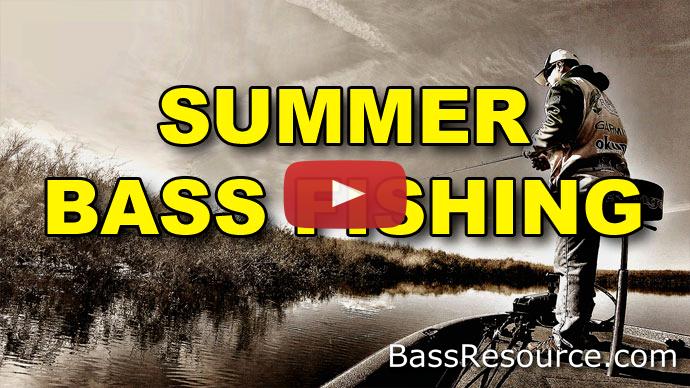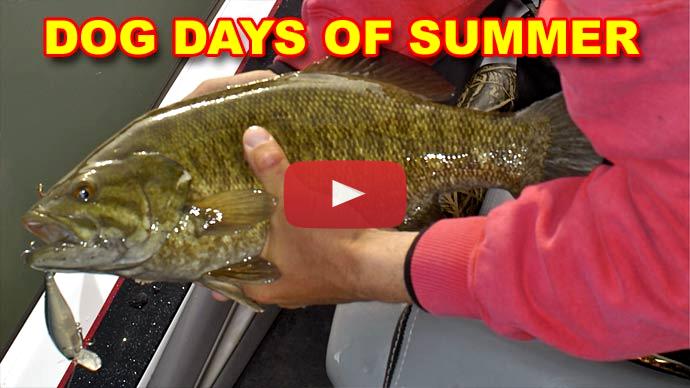Glenn: Fish? Fish! Wow! Geeze
Keri: Switch lures and look what happens.
Glenn: Ya, they don't want Chatterbaits. Do They?
Keri: Switch lures and look what happens. Alright little guy. I saw you swim out there and eat that thing. I got you hooked really weird too. There you go. You saw that bug and you said, "That's Mine!". Little buck. Hungry. Wants to eat.
Glenn: So here's a great question about summertime fishing, "Glenn, how important is it to find oxygen-rich water during the summer when the water temperatures are really warm?" Okay, so reading between the lines, oxygen...or water, once it starts to get into the 80-degree temperature mark and especially soaring into the 90s, it begins to lose its ability to hold dissolved oxygen. And the less oxygen that water holds, the less appealing that is to baitfish and bass. So, yeah, finding oxygen-rich water is really important because you're apt to find more bass and more baitfish and the action will be, you know, greater than in those areas that don't have it. So typically, deeper water during the summertime holds more oxygen.
There's always exceptions to the rules though.
Don't assume because the water temperature's really warm, all the bass are going to be deep. There's variables that can change that. For example, if you have a lot of vegetation, that vegetation produces oxygen, and so the water may have more oxygen there than say, when there's no vegetation. Or, you know, say for example, it's hydrilla or milfoil that taps out on the surface and actually produce shade underneath, then the water underneath that shade, that canopy can be cooler, maybe five degrees cooler, and so it can hold more oxygen then and it'll be cooler than what your temperature gauge reads on your trolling motor, so it can hold more oxygen plus there’s vegetation. So that adds to the oxygen. Also, wind can create a lot of oxygen. You get wind up on the shallows, and it's churning up the water, that will oxygenate the water as well. And finally, I've been in situations where I've seen the thermocline has been really shallow. Typically, we think of a thermocline as being deep, and anything below a thermocline really has...the water doesn't have a whole lot of oxygen at all. So you need to fish above the thermocline.
Well, I've seen some lakes at times where the thermocline is less than 10 feet deep. Honestly, that can happen. And so the fish aren't going to stay down below 10 feet deep for very long in that situation. They're going to be up shallow. Even though the water temperature maybe in the 90s and the oxygen level won't be as ideal, it's a lot better than you know the alternative where they can't survive under a thermocline.
So just understand, as a general rule, the warmer the water temperature, yeah, you'll find fish deeper, all things being equal, but there's a lot of variables to pay attention to where they may be shallow even though the water temperature is really warm.
If you have any questions for me, please, fire them at me at this email down below, or you can always shoot me a question on Facebook. For more tips and tricks like this, visit BassResource.com.



